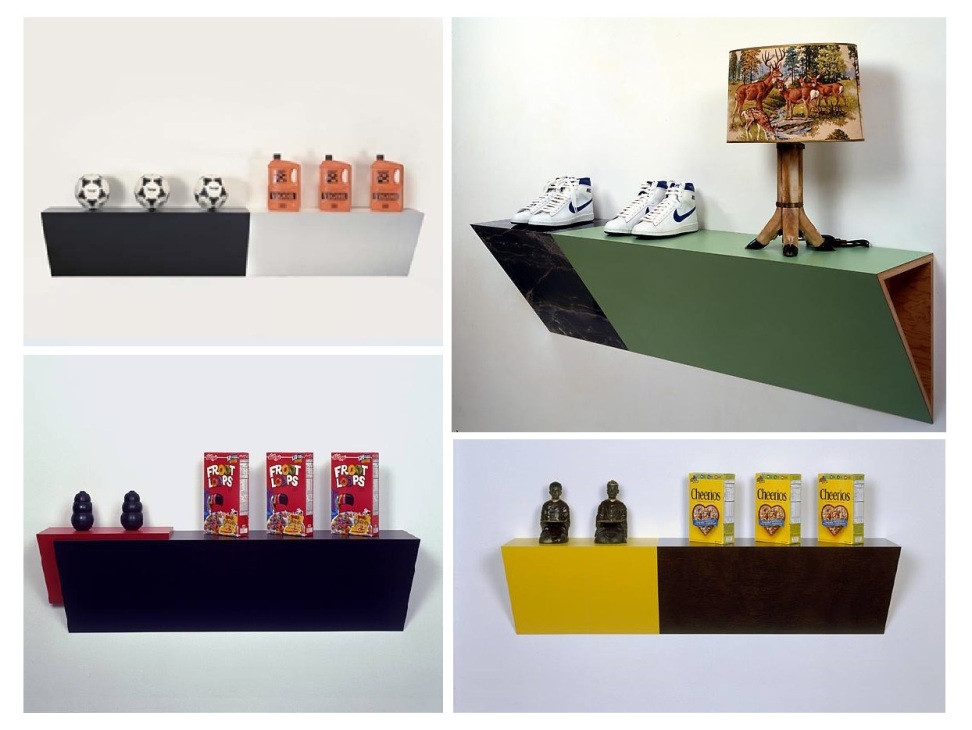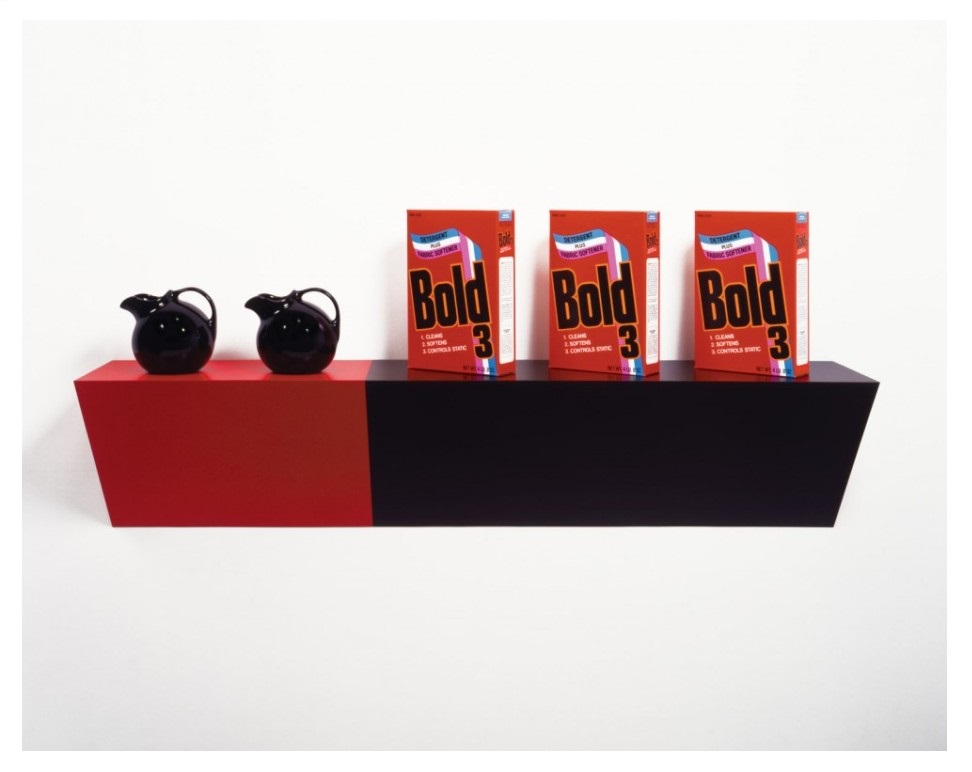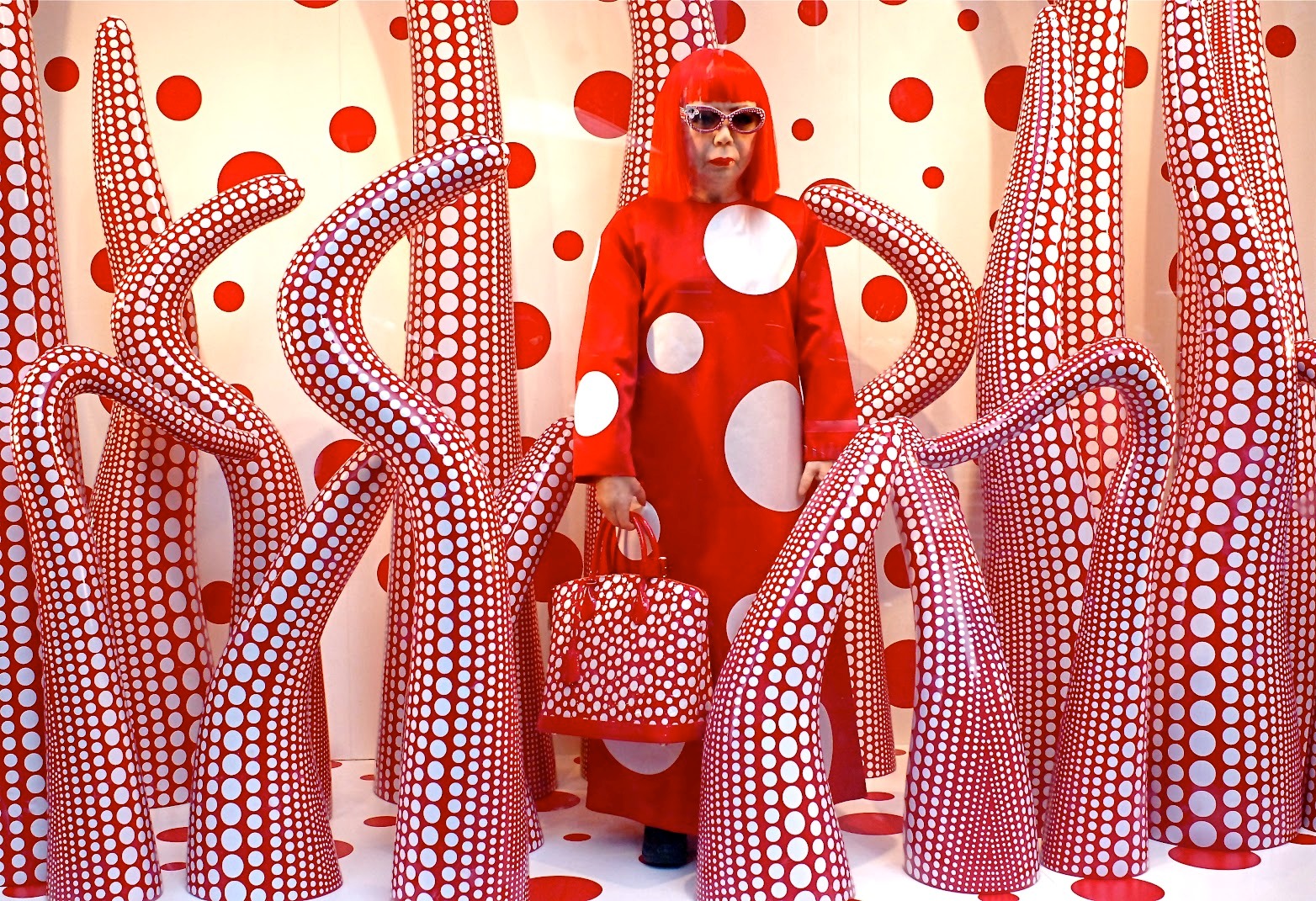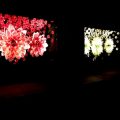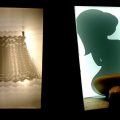Haim Steinbach has crafted a visual language that places everyday goods in arrangements that use repetition and formal contrast to push even further the idea that artist’s role is to select items and serve them up in unexpected or meaningful juxtapositions.
(The History of the Found Object in Art, by Ian Wallace – artspace.com) or elsewhere: Haim Steinbach unites the day-to-day habits of the home with the seemingly more conventional museum-based act of collection and display. (serpentinegalleries.org)
Haim Steinbach’s visual language reminds me the discussion about how fuzzy can become the differences between the roles that modern art and visual merchandising serve. Despite any kind of similarities between them in external ways of expressing certain messages, we usually tend to say that there is no common place in the field of pure intention. And merely that is true. But when it comes to the cooperation between famous modern artists and big brands everything gets obscure in that tenuous space between modern art and visual merchandising. Possibly such displays, as these by Haim Steinbach depicted above, would form weak messages right before potential customers΄ eyes, but sometimes modern art can become such impressive as potential customers need it to be in order to make a purchase, usually of high interest/ price.
From that point of view “Art is one area that grabs the luxury market’s attention because oftentimes they are the few who can afford it…Store windows are all about grabbing people’s attention and the luxury audience can be a difficult audience to grab…Unconventional windows such as art displays can be used as effective, attention-grabbing marketing strategies…Achieving success or failure depends (once again…) on how well brands and retailers understand the tastes and habits of their target audiences.*
Who can forget Louis Vuitton windows by Yayoi Kusama, a brand’s tactic to draw tourists, especially those from Japan, to its flagship Fifth Avenue store in New York,*
or even John Breeds Shoe Salon, in Stuttgart ?
Yayoi Kusama windows for Louis Vuitton
Nevertheless, reasonably enough, if a luxury retailer gives the display over to art instead of merchandise too regularly, consumers might lose sight of their connection to the merchandise contained within the store’s footprint. Furthermore Art displays are an intriguing break from the norm, but are not ideal if a brand is looking to push products.* (How-to guide for luxury brand store windows, by Tricia Carr – luxurydaily.com)


